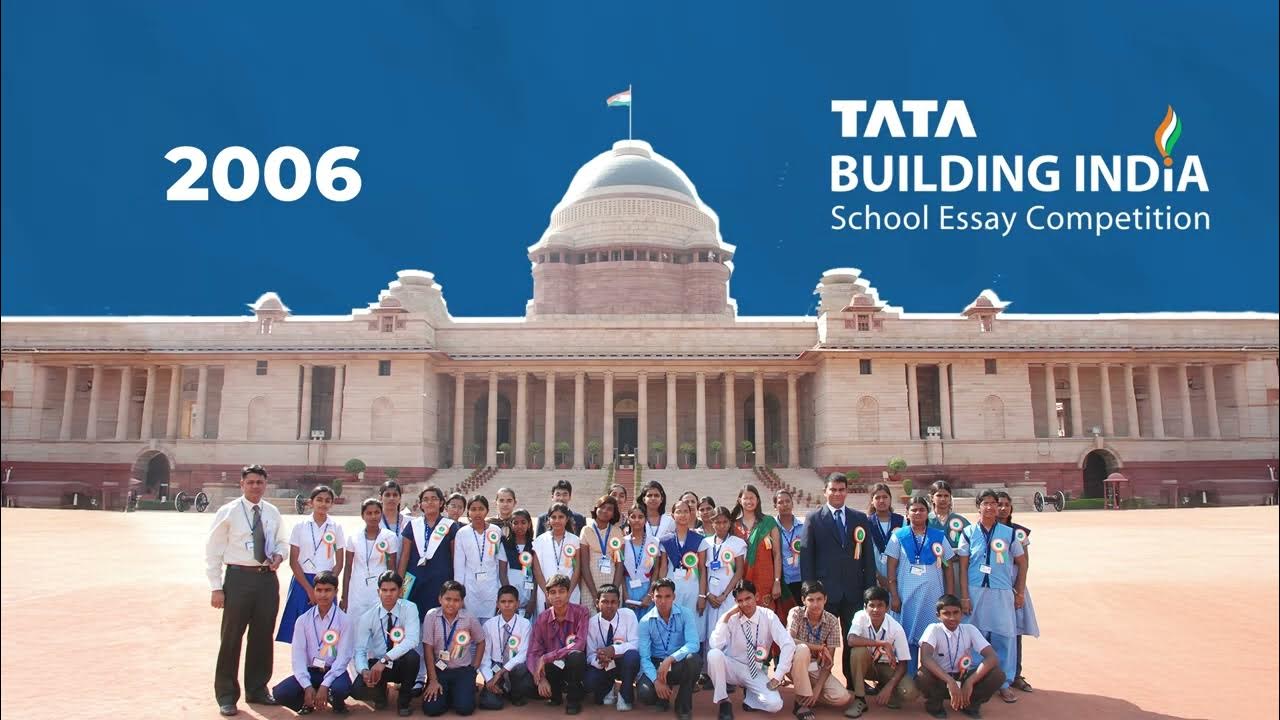How Tata Built India: Two Centuries of Indian Business
Summary
TLDRThe Tata Group, a cornerstone of India's industrial success, was founded by Jamsetji Tata during the British Raj. He pioneered various industries, introducing innovative employee benefits and expanding into steel and power. His sons continued this legacy, establishing key sectors in the early 20th century. Under JRD Tata, the group diversified into aviation, but faced challenges from post-independence socialist policies. Ratan Tata revitalized the conglomerate in the 1990s by acquiring international companies like Corus and Jaguar Land Rover, positioning Tata as a global leader. Today, Tata remains a symbol of innovation and social responsibility in India's economy.
Takeaways
- 🏢 Tata Group has been a pioneer in multiple industries in India for almost two centuries.
- 🚗 Tata Motors is one of the most well-known subsidiaries, but Tata's reach extends far beyond it.
- 📜 Jamsetji Tata, the founder, started the company during British colonial rule, facing challenges from the British East India Company.
- 💼 Jamsetji implemented progressive labor policies in his textile mills, such as sickness benefits and pensions.
- 🔩 The company expanded into steel production, cement, and insurance, laying the groundwork for modern industry in India.
- ✈️ Jehangir Tata (JRD) expanded the Tata Group and founded India’s first airline, Tata Air Service.
- 🇮🇳 After India's independence in 1947, Tata faced challenges due to socialist policies that conflicted with private business.
- 📈 Ratan Tata took over in 1991 and focused on regaining control of Tata subsidiaries amid economic liberalization.
- 🌍 Ratan's strategy included acquiring international companies to strengthen Tata's global presence and capabilities.
- 📈 Today, most of Tata's revenue comes from international operations, highlighting its successful global expansion.
Q & A
What is the Tata Group, and why is it significant in India's industrial landscape?
-The Tata Group is an industrial conglomerate that has played a pivotal role in shaping India's economy over nearly two centuries. It is known for pioneering multiple industries, including textiles, steel, and hospitality, and remains a market leader in many of these sectors.
Who founded the Tata Group, and what were his major contributions?
-Jamsetji Tata founded the Tata Group. He established India's first textile mills and was instrumental in diversifying the business into steel production, hydroelectric power, and hospitality, while also promoting employee welfare and education.
What impact did the British Raj have on the development of local entrepreneurship in India?
-The British Raj provided some economic opportunities for local entrepreneurs, unlike the harsher regime of the British East India Company. It invested in infrastructure, such as railways, which helped foster local industries and entrepreneurship.
How did JRD Tata contribute to the expansion of the Tata Group?
-JRD Tata expanded the Tata Group significantly during his leadership. He developed Tata Airlines, which became a significant venture despite being nationalized later, and worked on diversifying the group into various sectors, increasing its size and scope.
What challenges did the Tata Group face after India's independence in 1947?
-After India's independence, the Tata Group faced challenges due to socialist policies implemented by the new government, which conflicted with private enterprise. This led to the nationalization of some of their businesses and increased scrutiny.
What strategic moves did Ratan Tata make when he took over leadership in 1991?
-Ratan Tata focused on re-establishing ownership over Tata subsidiaries and reorganizing the company structure. He sold a portion of Tata Sons to acquire shares in Tata's subsidiaries and began a series of strategic acquisitions of foreign companies to enhance Tata's competitiveness.
What was the significance of Ratan Tata's acquisitions during the 2000s?
-Ratan Tata's acquisitions, including the purchase of Corus and Jaguar Land Rover, were significant as they helped the Tata Group expand its global presence and diversify its operations, contributing to its growth and success in international markets.
How has the Tata Group evolved in terms of its revenue sources?
-The Tata Group has evolved to generate the majority of its revenue from international markets, reflecting its successful global expansion strategy and the diversification of its subsidiaries.
What role does employee welfare play in the Tata Group's philosophy?
-Employee welfare has been a cornerstone of the Tata Group's philosophy, dating back to its founder, Jamsetji Tata. He implemented practices like sickness benefits and pensions, which were largely unknown in India at the time.
How does the current structure of Tata Group's subsidiaries reflect its historical evolution?
-The current structure of Tata Group's subsidiaries reflects its historical evolution by showcasing a diverse range of businesses under seven sectors, which allows for better control and strategic alignment within the conglomerate, stemming from past leadership challenges and market conditions.
Outlines

This section is available to paid users only. Please upgrade to access this part.
Upgrade NowMindmap

This section is available to paid users only. Please upgrade to access this part.
Upgrade NowKeywords

This section is available to paid users only. Please upgrade to access this part.
Upgrade NowHighlights

This section is available to paid users only. Please upgrade to access this part.
Upgrade NowTranscripts

This section is available to paid users only. Please upgrade to access this part.
Upgrade NowBrowse More Related Video

The Untold Story of Tata Group , Who built the Empire ?

How TATA STEEL became the GREATEST Company in INDIAN History? | Business Case Study Ep2 Tata Series

Ratan Tata’s Journey | Mega Icons | हिंदी | S1 - E4 | Nat Geo

The Men who Built India | Untold Story of Tata | Dhruv Rathee

Jamshedji TATA : STRATEGY of the GREATEST BUSINESS TYCOON of India

How a tribute led to a movement | Tata Building India School Essay Competition | English
5.0 / 5 (0 votes)